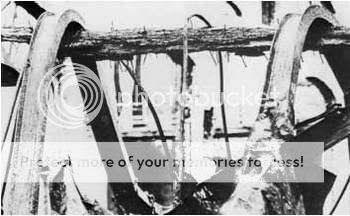It looks like you're using an Ad Blocker.
Please white-list or disable AboveTopSecret.com in your ad-blocking tool.
Thank you.
Some features of ATS will be disabled while you continue to use an ad-blocker.
share:
Lets look at the steel from 9/11 and then see if people can explain the forces involved which acted upon it.
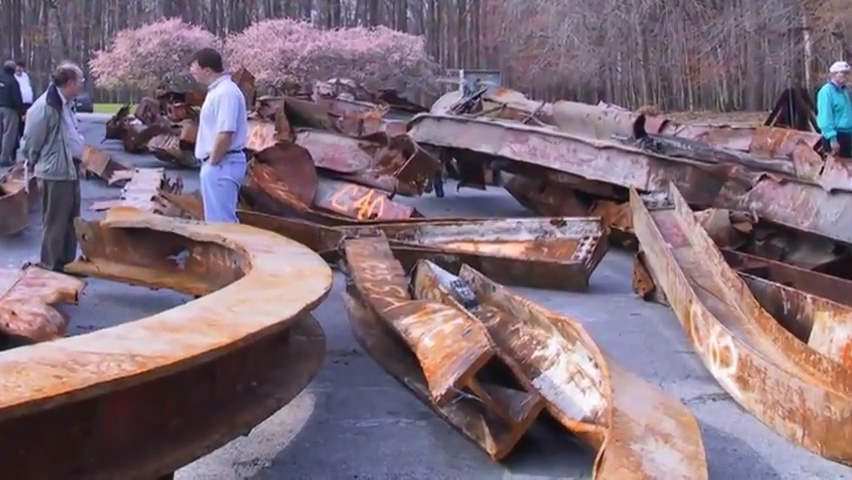
Bent column...like a pretzel ...i guess it just bent that way during the collapse...or was it heat induced.
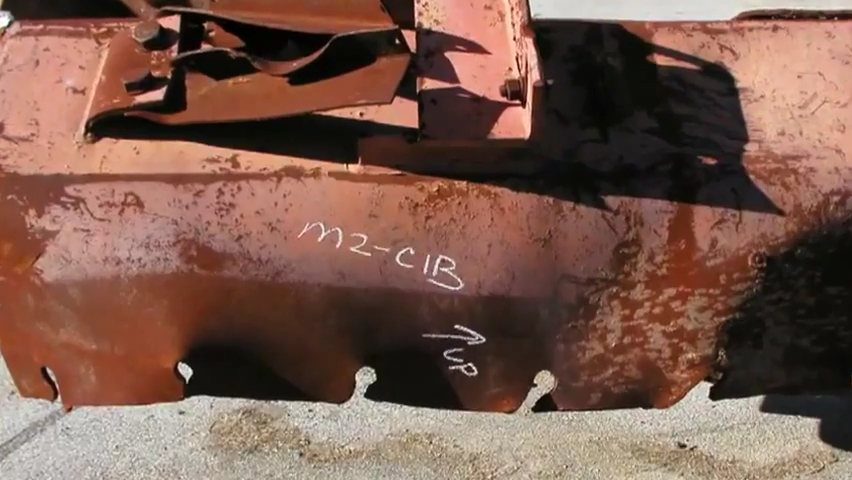
truss anchor seat bent up...see the arrow...yet we are led to believe by the debunkers the floors were collapsing downward.
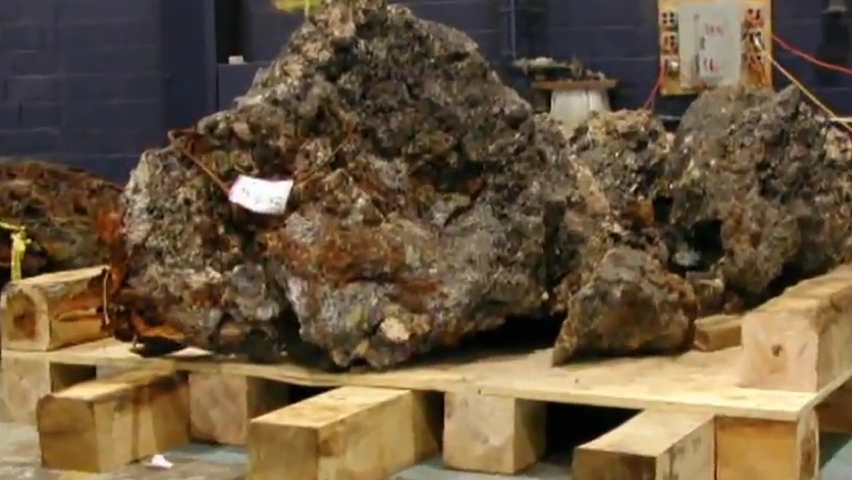
Molten metal ...yet of course there wasn't any molten metal...so this must be a figment of my imagination...but i was informed that there were underground fires ....very interesting...since the fire were on the above the 80th floors....but heck...fire goes down not up.

we have failing truss seats...i know the odd one must have got away...there were so many...yet the buildings were symmetrical in their collapse.
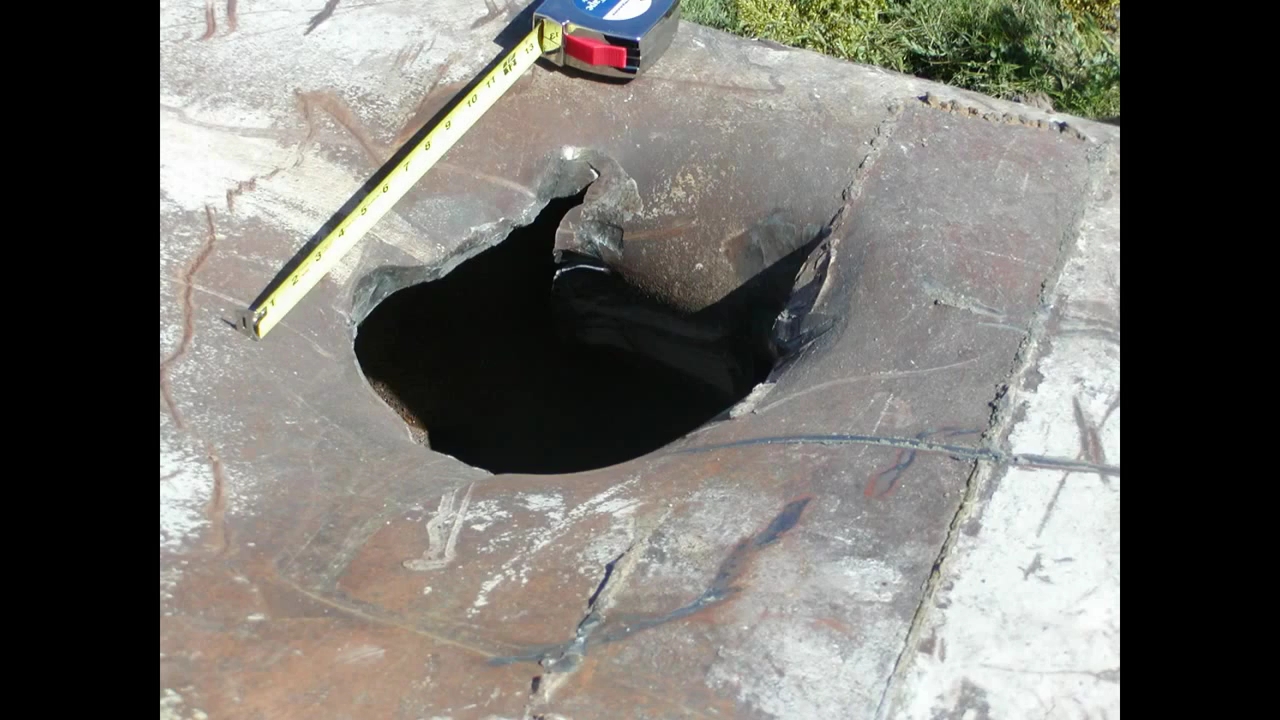
This punture must have occur during the collapse....being it is an internal box column....from one of the higher floors due to is thickness....the lower columns were much thicker steel.
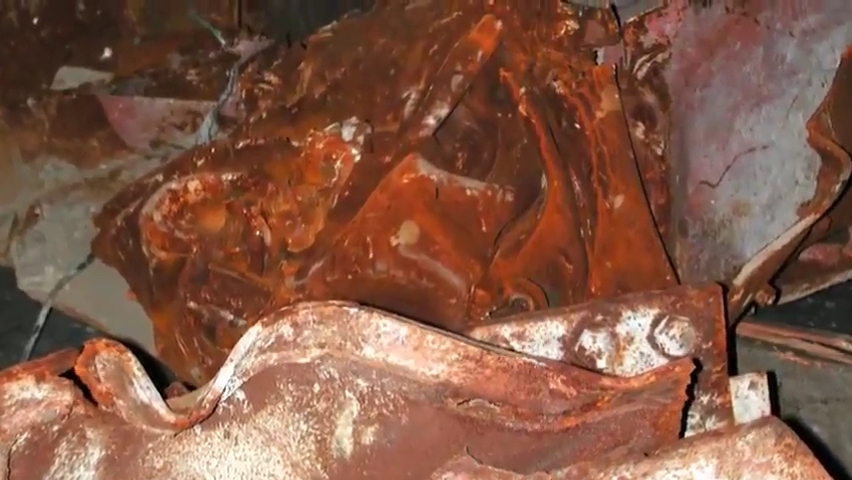
This is some more of the non molten melted steel that never occurred....but is easily explained i am sure.
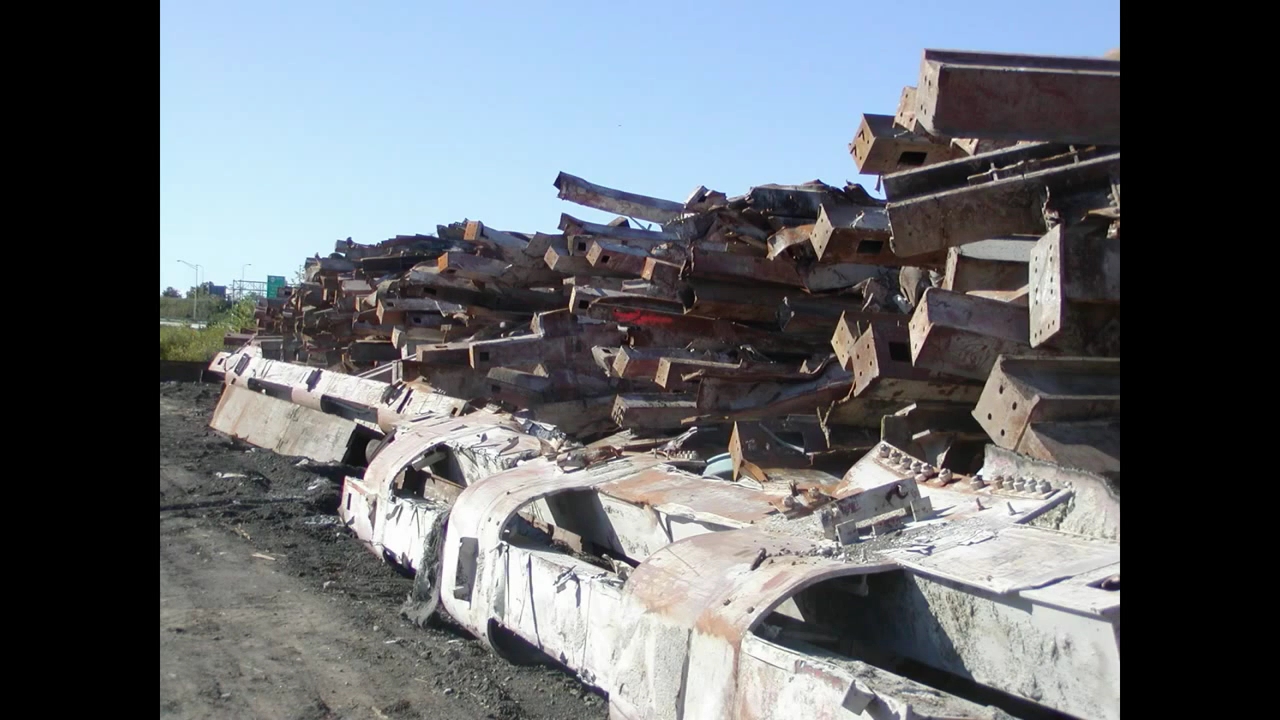
again more of those pesky weak truss seats that just do not bend under the strain of all those floor crushing down on them.
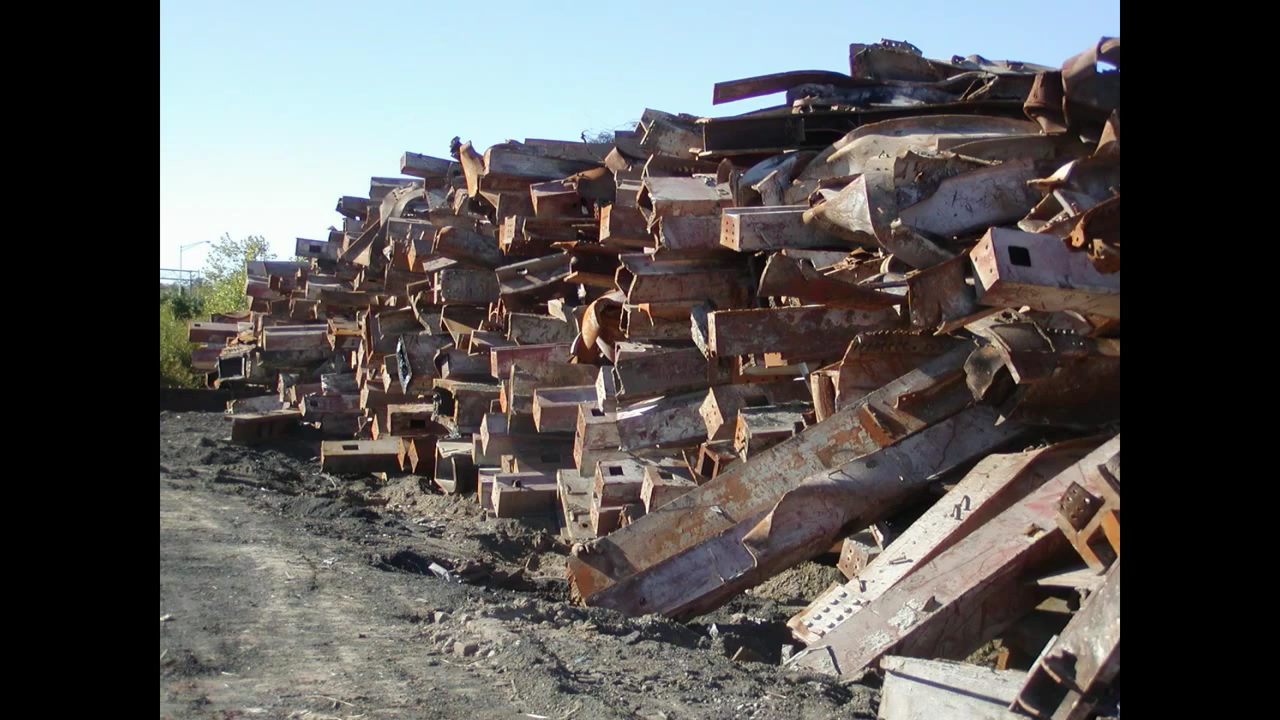
so many box columns from the exterior that for some reason are not sowing much deformation where the bolt holes are as they were ripped apart from each other.
I started another thread so people could have reference material...to use to look at things...but just feel free to browse my image files and use all that you need if it helps in your discussions....It would have been nice if investigators had full access to all this metal.
before it was auctioned off and melted down.....as these gleaming towers went from this...
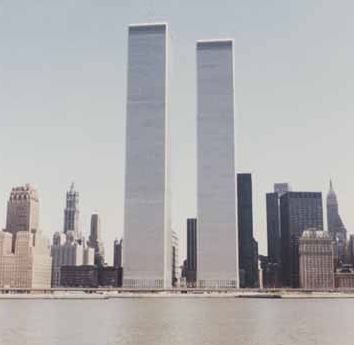
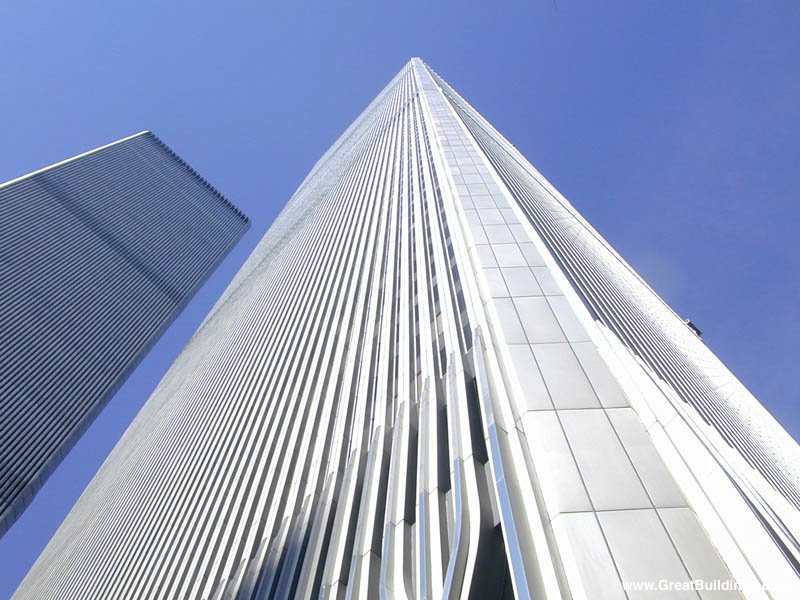
to this.....
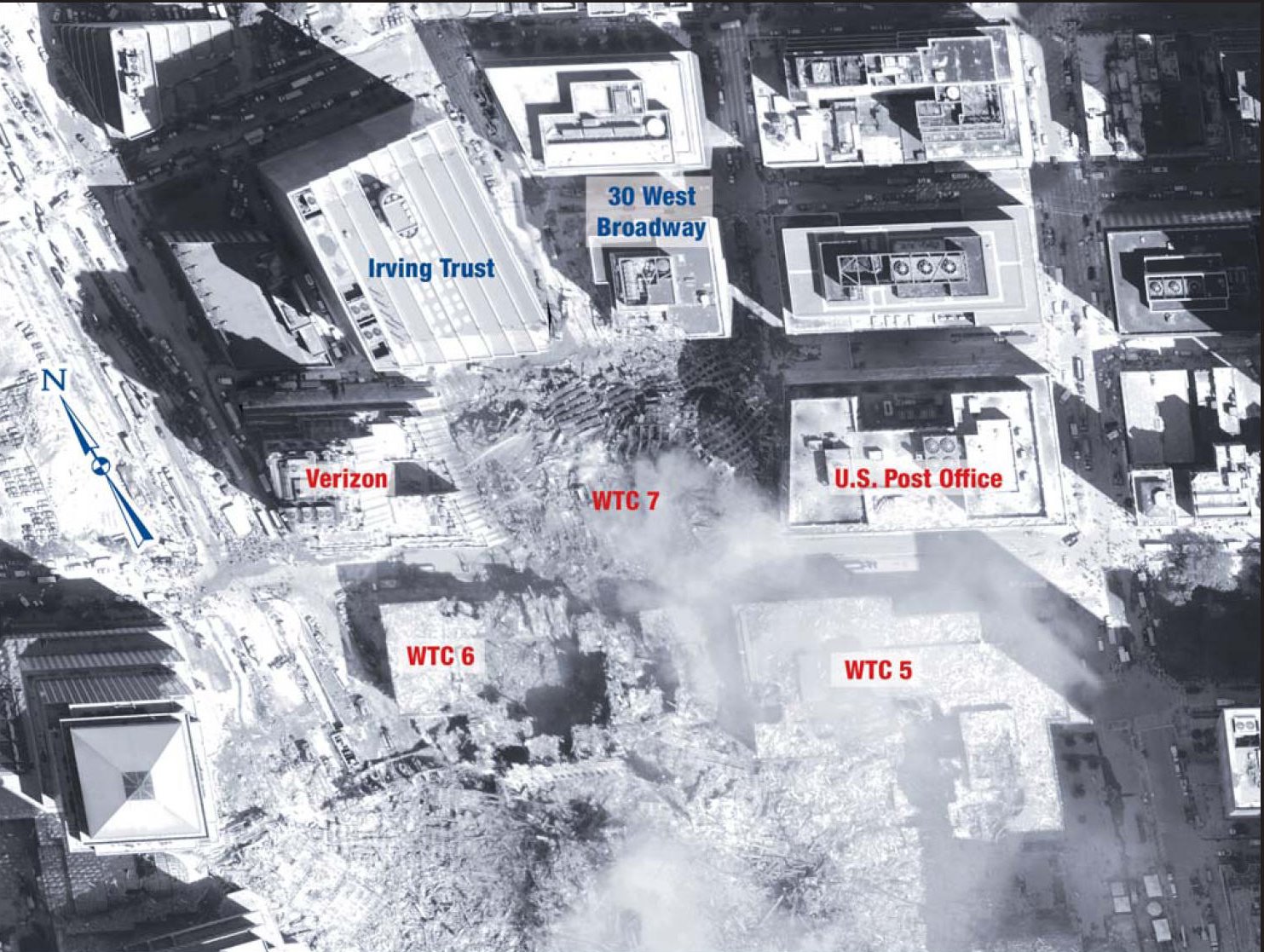

Bent column...like a pretzel ...i guess it just bent that way during the collapse...or was it heat induced.

truss anchor seat bent up...see the arrow...yet we are led to believe by the debunkers the floors were collapsing downward.

Molten metal ...yet of course there wasn't any molten metal...so this must be a figment of my imagination...but i was informed that there were underground fires ....very interesting...since the fire were on the above the 80th floors....but heck...fire goes down not up.

we have failing truss seats...i know the odd one must have got away...there were so many...yet the buildings were symmetrical in their collapse.

This punture must have occur during the collapse....being it is an internal box column....from one of the higher floors due to is thickness....the lower columns were much thicker steel.

This is some more of the non molten melted steel that never occurred....but is easily explained i am sure.

again more of those pesky weak truss seats that just do not bend under the strain of all those floor crushing down on them.

so many box columns from the exterior that for some reason are not sowing much deformation where the bolt holes are as they were ripped apart from each other.
I started another thread so people could have reference material...to use to look at things...but just feel free to browse my image files and use all that you need if it helps in your discussions....It would have been nice if investigators had full access to all this metal.
before it was auctioned off and melted down.....as these gleaming towers went from this...


to this.....

While its obvious that the collapse of buildings 1, and 2, are improbable, the main tangent that people should delve on to show the clear absurdity of
NIST's investigation, is their report on building 7. Not trying to hijack your thread, but this information is (in my opinion), the key to smashing
apart the lies surrounding this tragedy. Its straight from their investigative report, and it vividly shows the improbability, and downright
impossible nature of the chain of events they claim took place on 9/11.
Here is some quotes from the NIST PDF...
2.4 probable collapse sequence:
"Due to the effectiveness of SFRM, the highest column temperature in WTC 7 only reached an estimated 300 degree's Celsius, or 570 degree's Fahrenheit, and only on the east side of the building did the floor beams reach or exceed about 600 degrees Celsius 1100 degree's Fahrenheit."
NIST calculations (NIST NCSTAR 1-9, Chapter 4) showed that even if the entire column had been immersed in a 1400 degree's Celsius/ 2550 degree's Fahrenhiet flame, it would have taken 6 hours to heat the column to the point of significant loss of strength, and stiffness.
Fires broke out on at least 10 floors of WTC 7, near the damaged southwest corner of the building (NIST NCSTAR 1-9, Chapter 5). They were typically observed as single floor fires, and observations supported a local fire origin on an given floor. Unlike the WTC towers, there was no dispersion of jet fuel in WTC 7 causing simultaneous fire intiation over extensive areas of a single floor or over multiple adjacent floors.
Source NIST PDF
Single floor fires, under 650 degrees Celsius, their admission that it would need to be immersed in 1400 degree's Celsius flame for 6 hours to heat the column to a "point of significant loss of strength, and stiffness.". I honestly don't see a better way of destroying their flimsy investigation report, then by using it against them.
Here is some quotes from the NIST PDF...
2.4 probable collapse sequence:
"Due to the effectiveness of SFRM, the highest column temperature in WTC 7 only reached an estimated 300 degree's Celsius, or 570 degree's Fahrenheit, and only on the east side of the building did the floor beams reach or exceed about 600 degrees Celsius 1100 degree's Fahrenheit."
NIST calculations (NIST NCSTAR 1-9, Chapter 4) showed that even if the entire column had been immersed in a 1400 degree's Celsius/ 2550 degree's Fahrenhiet flame, it would have taken 6 hours to heat the column to the point of significant loss of strength, and stiffness.
Fires broke out on at least 10 floors of WTC 7, near the damaged southwest corner of the building (NIST NCSTAR 1-9, Chapter 5). They were typically observed as single floor fires, and observations supported a local fire origin on an given floor. Unlike the WTC towers, there was no dispersion of jet fuel in WTC 7 causing simultaneous fire intiation over extensive areas of a single floor or over multiple adjacent floors.
Source NIST PDF
Single floor fires, under 650 degrees Celsius, their admission that it would need to be immersed in 1400 degree's Celsius flame for 6 hours to heat the column to a "point of significant loss of strength, and stiffness.". I honestly don't see a better way of destroying their flimsy investigation report, then by using it against them.
reply to post by plube
2nd picture that YOU posted .. Note where the bolts have torn through the metal at the bottom of the photo.

You seem to be fighting two sides of an argument. In on instance you point out how an I-beam is "bent like a pretzel" as evidence of foul play and then you point out that a heap of beams in a pile as evidence of foul play because they aren't bent to your satisfaction.
Excellent pictures.
Terrible scientific analysis.
so many box columns from the exterior that for some reason are not sowing much deformation where the bolt holes are as they were ripped apart from each other.
2nd picture that YOU posted .. Note where the bolts have torn through the metal at the bottom of the photo.

You seem to be fighting two sides of an argument. In on instance you point out how an I-beam is "bent like a pretzel" as evidence of foul play and then you point out that a heap of beams in a pile as evidence of foul play because they aren't bent to your satisfaction.
Excellent pictures.
Terrible scientific analysis.
edit on 25/7/2012 by OccamAssassin because: (no reason given)
Originally posted by plube
Lets look at the steel from 9/11 and then see if people can explain the forces involved which acted upon it.
Start with Gravity.
I think the best explanation for all of the odd occurrences that happened that day comes from Judy Wood in her book "Where did the towers go".
Link to an interview she gave. www.youtube.com...
If more than 200,000 tons of steel was used in the construction : hypertextbook.com...
Why did they only recover and remove 185,000 tons? 911research.wtc7.net...
Steel dosent just evaporate or disappear.
There are still too many unanswered questions, and sadly I don't think we will ever truly know.
Link to an interview she gave. www.youtube.com...
If more than 200,000 tons of steel was used in the construction : hypertextbook.com...
Why did they only recover and remove 185,000 tons? 911research.wtc7.net...
Steel dosent just evaporate or disappear.
There are still too many unanswered questions, and sadly I don't think we will ever truly know.
edit on 25-7-2012 by coven83 because: (no
reason given)
The question should be how did the sagging trusses pull the in the columns to begin with?
IF the trusses could put a pulling force on the columns, why did the connections not fail first?
If the connections didn't fail during the pull-in then why did they fail at all? Surely the columns were stronger than the 1" and 5/8" bolts?
I remember a time when OSers claimed the trusses were a single bolt connection, and a weak point that allowed the floors to pancake.
So where did that claim go?
How did failed connections of truss seats cause the central core to break up into individual lengths of steel?
IF the trusses could put a pulling force on the columns, why did the connections not fail first?
If the connections didn't fail during the pull-in then why did they fail at all? Surely the columns were stronger than the 1" and 5/8" bolts?
I remember a time when OSers claimed the trusses were a single bolt connection, and a weak point that allowed the floors to pancake.
So where did that claim go?
How did failed connections of truss seats cause the central core to break up into individual lengths of steel?
In both towers the collapse started near the top. With so many immense steel girders below, the collapse should have slid of the side. What we saw
could only happen if the steel girders below were weakened first.
Originally posted by Six Sigma
Originally posted by plube
Lets look at the steel from 9/11 and then see if people can explain the forces involved which acted upon it.
Start with Gravity.
Six Sigma, gravity alone does not make a building collpase!
Statements by Engineers
Engineers who participated in the design of the World Trade Center have stated, since the attack, that the Towers were designed to withstand jetliner collisions. For example, Leslie Robertson, who is featured on many documentaries about the attack, said he "designed it for a (Boeing) 707 to hit it." Statements and documents predating the attack indicate that engineers considered the effects of not only of jetliner impacts, but also of ensuing fires.
John Skilling
John Skilling was the head structural engineer for the World Trade Center. In a 1993 interview, Skilling stated that the Towers were designed to withstand the impact and fires resulting from the collision of a large jetliner such as Boeing 707 or Douglas DC-8.
Our analysis indicated the biggest problem would be the fact that all the fuel (from the airplane) would dump into the building. There would be a horrendous fire. A lot of people would be killed, ... The building structure would still be there.
A white paper released on February 3, 1964 states that the Towers could have withstood impacts of jetliners travelling 600 mph -- a speed greater than the impact speed of either jetliner used on 9/11/01.
The buildings have been investigated and found to be safe in an assumed collision with a large jet airliner (Boeing 707—DC 8) traveling at 600 miles per hour. Analysis indicates that such collision would result in only local damage which could not cause collapse or substantial damage to the building and would not endanger the lives and safety of occupants not in the immediate area of impact.
Source
edit on 25-7-2012 by thegameisup because: added bold
reply to post by VoidHawk
Correct! They were weakened (blown all to hell) with massive explosions of mini nukes!
Correct! They were weakened (blown all to hell) with massive explosions of mini nukes!
Originally posted by Six Sigma
Originally posted by plube
Lets look at the steel from 9/11 and then see if people can explain the forces involved which acted upon it.
Start with Gravity.
No, gravity does not have the energy to do that. Go drop a steel I beam from a thousand feet, it will not turn into a pretzel. Add internal resistance, and you simply do not have enough energy to cause that much deformation to steel.
Even the 93 bombing didn't damage core columns, let alone bend them with no stress cracks.
reply to post by OccamAssassin
actually that is part of the dilemma in a sense...and part of the point...this is supposed to be a gravity driven collapse...yet the pic you chose to weed out...look at the tear...it is downward...yet the truss anchor is bent up ...the truss seat itself is not bent at all...so the section to the right that was attached at the spandrel tore down or that the truss for some reason tore upwards....that one image shows how the force was acting it several directions at once. now would that be indicative of gravity acting alone.
i am not trying to really analyze it i am pleased to let others state what they think then i will ask questions as to why they think the way they do. Does that work?
as for the box columns...if they are being torn form their connections...would there not be some considerable deformation aRound the bolt connections?
actually that is part of the dilemma in a sense...and part of the point...this is supposed to be a gravity driven collapse...yet the pic you chose to weed out...look at the tear...it is downward...yet the truss anchor is bent up ...the truss seat itself is not bent at all...so the section to the right that was attached at the spandrel tore down or that the truss for some reason tore upwards....that one image shows how the force was acting it several directions at once. now would that be indicative of gravity acting alone.
i am not trying to really analyze it i am pleased to let others state what they think then i will ask questions as to why they think the way they do. Does that work?
as for the box columns...if they are being torn form their connections...would there not be some considerable deformation aRound the bolt connections?
reply to post by Six Sigma
well does the gravity explain these occurrences.


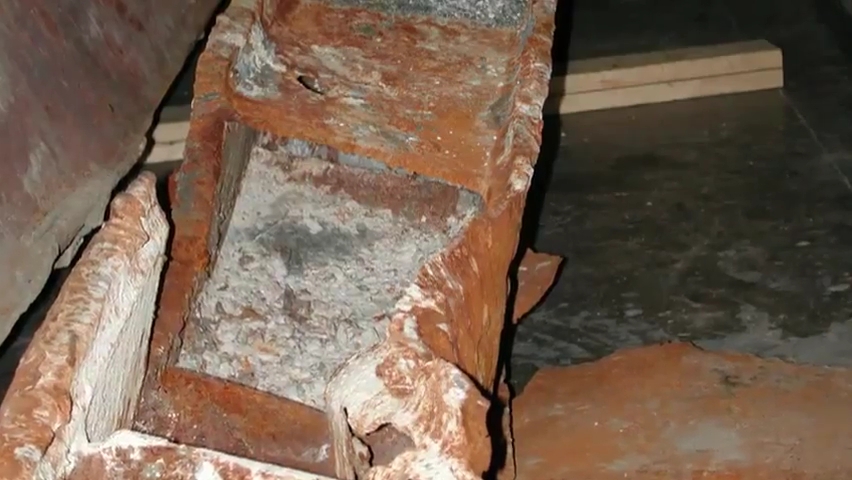
The purpose of this thread is to start to analyze the steel...i have thousands of images of the steel and so much is questionable.
well does the gravity explain these occurrences.



The purpose of this thread is to start to analyze the steel...i have thousands of images of the steel and so much is questionable.
edit on
063131p://f59Wednesday by plube because: (no reason given)
I find this one particularly interesting...maybe others will also.
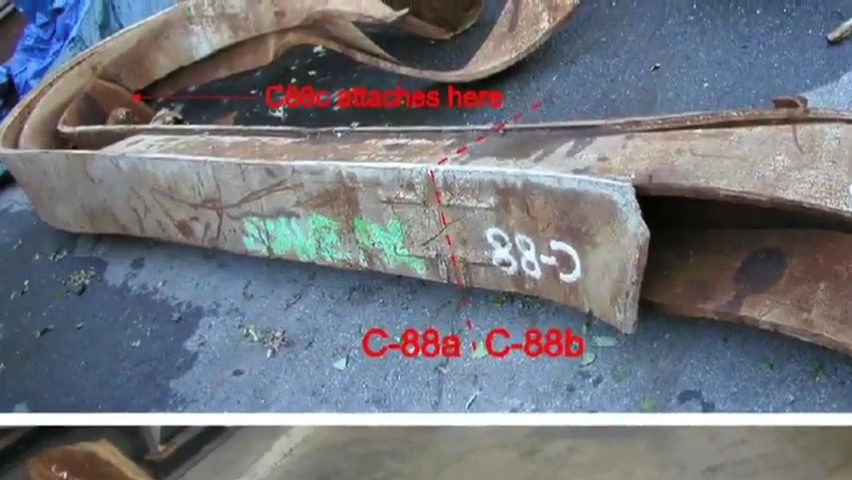

reply to post by OccamAssassin
Yes just another thought....if the collapse progressed as many of the Os supporters on here say...then the floors dynamic load exceeded capacity...then this caused the seats to fail...and progressed the collapse downward...so one would think the majority of truss seats should be bent mainly like this.

but as we can see so many are not...so why would this be..

Many are like there wasn't any downward force...but strictly lateral force being applied....how does that fit in with a gravity driven collapse.
Also i would venture a guess that many people will not even touch upon the molten metal bits.
Yes just another thought....if the collapse progressed as many of the Os supporters on here say...then the floors dynamic load exceeded capacity...then this caused the seats to fail...and progressed the collapse downward...so one would think the majority of truss seats should be bent mainly like this.

but as we can see so many are not...so why would this be..

Many are like there wasn't any downward force...but strictly lateral force being applied....how does that fit in with a gravity driven collapse.
Also i would venture a guess that many people will not even touch upon the molten metal bits.
edit on 073131p://f23Wednesday by plube because:
(no reason given)
Originally posted by ANOK
No, gravity does not have the energy to do that. Go drop a steel I beam from a thousand feet, it will not turn into a pretzel. Add internal resistance, and you simply do not have enough energy to cause that much deformation to steel.
Even the 93 bombing didn't damage core columns, let alone bend them with no stress cracks.
Do we know for certain that the steel was bent during the collapse? If it had tons of rubble on each end while it was heated from the fires for ...days...weeks?. This would lead to creeping behavior that could bend, not to break. NIST has a lot to say about creep, even as part of its collapse hypothesis.
More about creep:
Creep Deformation of Metals
www.doitpoms.ac.uk...
You are way off with the 93 Bombing, Anok and you know it. You and I are going to do an experiment together, okay? We are each going to take a fire cracker. I am going to rest it on the palm of my hand and light it. You, Anok are going to tape your firecracker to your finger and light it. Please post your results...then I will.
edit on 25-7-2012 by Six Sigma because: (no reason given)
Originally posted by Six Sigma
Do we know for certain that the steel was bent during the collapse? If it had tons of rubble on each end while it was heated from the fires for ...days...weeks?. This would lead to creeping behavior that could bend, not to break. NIST has a lot to say about creep, even as part of its collapse hypothesis.
More about creep:
Creep Deformation of Metals
www.doitpoms.ac.uk...
Creep deformation does not do what we see in those pics lol.
You are way off with the 93 Bombing, Anok and you know it. You and I are going to do an experiment together, okay? We are each going to take a fire cracker. I am going to rest it on the palm of my hand and light it. You, Anok are going to tape your firecracker to your finger. Please post your results...then I will.
What are you taking about? Are you admitting that the 2001 bombs were placed directly on the columns? But so what, the comment was not that important lol.
The important point you should focus on is the signs of extremely high temperatures, not possible from an office fires, shown in the steel. When those steel beams were deformed they were at a malleable temperature (temp at which the steel can be worked, or deformed), which starts around 2,000 °F (1,090 °C). There is simply no way that steel got that hot in an hour from office fires. For a start off the room wouldn't even get that hot in an hour, it would have to be much hotter than 2,000 °F to cause the steel to get to that temp, or even anywhere close...
Temperatures of objects
It is common to find that investigators assume that an object next to a flame of a certain temperature will also be of that same temperature. This is, of course, untrue. If a flame is exchanging heat with a object which was initially at room temperature, it will take a finite amount of time for that object to rise to a temperature which is 'close' to that of the flame. Exactly how long it will take for it to rise to a certain value is the subject for the study of heat transfer. Heat transfer is usually presented to engineering students over several semesters of university classes, so it should be clear that simple rules-of-thumb would not be expected. Here, we will merely point out that the rate at which target objects heat up is largely governed by their thermal conductivity, density, and size. Small, low-density, low-conductivity objects will heat up much faster than massive, heavy-weight ones.
www.doctorfire.com...
Originally posted by plube
so one would think the majority of truss seats should be bent mainly like this.
but as we can see so many are not...so why would this be..
Silly, these are two photos of the same column viewed from different angles. Therefore they are bent exactly alike.
new topics
-
Putin, Russia and the Great Architects of the Universe
ATS Skunk Works: 44 minutes ago -
A Warning to America: 25 Ways the US is Being Destroyed
New World Order: 5 hours ago -
President BIDEN's FBI Raided Donald Trump's Florida Home for OBAMA-NORTH KOREA Documents.
Political Conspiracies: 10 hours ago
top topics
-
President BIDEN's FBI Raided Donald Trump's Florida Home for OBAMA-NORTH KOREA Documents.
Political Conspiracies: 10 hours ago, 28 flags -
A Warning to America: 25 Ways the US is Being Destroyed
New World Order: 5 hours ago, 10 flags -
Gaza Terrorists Attack US Humanitarian Pier During Construction
Middle East Issues: 17 hours ago, 8 flags -
Las Vegas UFO Spotting Teen Traumatized by Demon Creature in Backyard
Aliens and UFOs: 16 hours ago, 7 flags -
2024 Pigeon Forge Rod Run - On the Strip (Video made for you)
Automotive Discussion: 16 hours ago, 4 flags -
Is AI Better Than the Hollywood Elite?
Movies: 12 hours ago, 3 flags -
Maestro Benedetto
Literature: 12 hours ago, 1 flags -
Putin, Russia and the Great Architects of the Universe
ATS Skunk Works: 44 minutes ago, 1 flags
active topics
-
What in the S.E.O. hell is this?
General Chit Chat • 27 • : reannamurphy -
Putin, Russia and the Great Architects of the Universe
ATS Skunk Works • 7 • : RussianTroll -
"We're All Hamas" Heard at Columbia University Protests
Social Issues and Civil Unrest • 286 • : FlyersFan -
A Warning to America: 25 Ways the US is Being Destroyed
New World Order • 9 • : Lazy88 -
President BIDEN's FBI Raided Donald Trump's Florida Home for OBAMA-NORTH KOREA Documents.
Political Conspiracies • 21 • : CriticalStinker -
SETI chief says US has no evidence for alien technology. 'And we never have'
Aliens and UFOs • 75 • : Hecate666 -
Las Vegas UFO Spotting Teen Traumatized by Demon Creature in Backyard
Aliens and UFOs • 13 • : FlyersFan -
Mood Music Part VI
Music • 3105 • : BrucellaOrchitis -
The Acronym Game .. Pt.3
General Chit Chat • 7752 • : bally001 -
Is AI Better Than the Hollywood Elite?
Movies • 18 • : Hecate666


